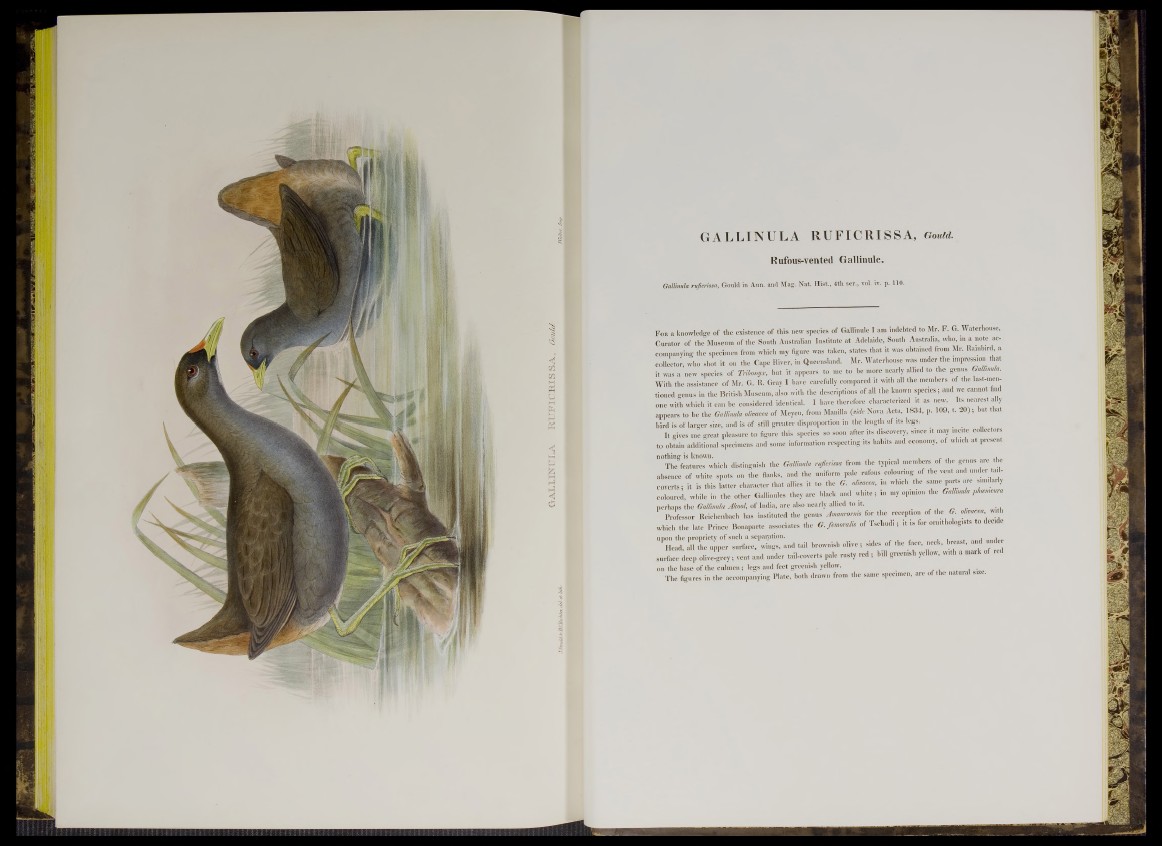
'is
GALLINTOXA KX7FXCBXS SA, Gould-.
GALLINULA RUFICRISSA, Gould.
Rufous-vented Gallinule.
Gallinula ruficrissa, Gould in Ann. and Mag. Nat. Hist., 4th ser., vol. iv. p. 110.
For a knowledge of the existence of this new species of Gallinule I am indebted to Mr. F. G. Waterhouse,
Curator of the Musemn of the South Australian Institute at Adelaide, South Australia, who, in a note accompanying
the specimen from which my figure was taken, states that it was obtained from Mr. Ramb.rd a
collector, who shot it on the Cape River, in Queensland. Mr. Waterhouse was under the impression that
it was a new species of Tribonyx, but it appears to me to be more nearly allied to the genus Gallmula.
With the assistance of Mr. G. R. Gray I have carefully compared it with all the members of the last-mentioned
genus in the British Museum, also with the descriptions of all the known species; and we cannot find
one with which it can be considered identical. I have therefore characterized it as new. ^ nearest ally
appears to be the Gallmula olivacea of Meyen, from Manilla (vide Nova Acta, 1834, p. 109, t. - 0 ) ; but that
bird is of larger size, and is of still greater disproportion in the length of its legs.
It gives me great pleasure to figure this species so soon after its discovery, since it may m e te collectors
to obtain additional specimens and some information respecting its habits and economy, of which at present
nothing is known. ,
The features which distinguish the Gallmula rufierma from the typical members of the genus are the
absence of white spots on the flanks, and the uniform pale rufous colouring of the vent and under tail-
co v e rt., it is this latter character that allies it to the G. olivacea, in which the same parts are similarly
coloured, while in the other Gallinules they are black and white; in my opinion the Gallmula pbxmcura
perhaps the Gallmula Akool, of India, are also nearly allied to it. . ,■ I
Professor Reicl.enbach has instituted the genus Amaurornh for the reception of the G. ohvacea with
which the late Prince Bonaparte associates the G. femoralis of Tschudi; it is for ornithologists to decide
tail brownish olive; sides of the face, neck, breast, and under
surface deep olive-grey; vent and under tail-coverts pale rusty red ; bill greenish yellow, with a mark of red
on the base of the culmen; legs and feet greenish yellow.
The figures in the accompanying Plate, both drawn from the same specimen, are of the natural size.